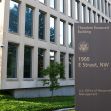One of President Biden’s executive orders issued in the first week of his administration is intended to “encourage [federal worker] union organizing and collective bargaining” and to “protect, empower, and rebuild the career federal workforce.”
During the Trump administration, three executive orders targeting federal unions were signed into law on the same day in May 2018. Coined the “May Day Executive Orders” by some federal unions, the orders were the first step in banning the use of official union time during working hours; dissolving civil service protections to make it easier to remove career employees, and creating an Interagency Labor Relations Working Group that would develop “cost-reducing approaches to federal sector collective bargaining.”
Official Time for union stewards and representatives is a negotiated period of time each day, week, or month, designated for collective bargaining, researching employee law, and arguing grievances. Tasks such as membership drives and internal business, like budget allocations, cannot be performed on official time for federal unions. President Trump in his 2018 executive orders branded this official time as “taxpayer official time,” a phrase that many took to mean a waste, or at the very least, inefficient use of taxpayer dollars for government services.
By restricting official time to only non-government time, unions risk losing membership, and therefore strength and funding, through the notion of “out of sight, out of mind.” Unions were restricted to less than 25% of their working time on union efforts, and the administration encouraged employers to only allow a maximum of one hour of official time per employee per bargaining unit. It also restricted unions from using government property, such as government email, WiFi, paper, and office space, for free. Instead, the administration encouraged employers to either charge rent or to restrict all use.
While many see unions as working toward creating an equitable, fair, and safe workplace, one of the largest contributions unions make is negotiating the types of discipline employers can use against employees that are seen as “poor performers.” The union can use its official time to research any incident of dismissal or suspension to ensure that these measures are just, fair, and are covered under federal employee legislation.
Taking away these protections, as the Trump executive orders sought to do, made it easier for federal employers to lose their jobs. The executive orders reduced the time span of Performance Improvement Plans for poor performers, making it more likely for employees to fail to complete their plan by not allowing adequate time for employees to prove the quality of their work.
As part of the Biden-Harris administration’s goal to make the federal government “a model employer,” this new executive order also removed the creation of Schedule F employees. This Schedule was created in an executive order in October 2020 under the Trump administration. It mandated that “employees in confidential, policy-determining, policy-making or policy-advocating positions” be converted to this new schedule that would strip those employees of their protections, such as career designations. It also allowed for employers to fire these career employees without cause. The Biden administration stated that this conversion was “unnecessary to the conditions of good administration” and further added that the designation of this new Schedule F “undermined the foundations of civil service and its merit system principals.”
The Trump administration was notorious throughout its term for a high rate of turnover among high-level or senior-level officials and advisors. According to a Brookings Institute study published in July of 2021, 92% of President Trump’s “A-Team” in the executive office left their positions within the four-year term. In comparison, President George W. Bush had the lowest turnover rate in his two terms at just over 60%, and President Reagan had the second-highest rate at just under 80%.
However, this does not account for the large percentage of everyday civil and foreign service employees that either left their post or were forced out under the Trump administration. In one example, the Department of State’s first Trump-appointed Secretary of State, Rex Tillerson, enforced an unprecedented hiring freeze during the first year and a half of the administration’s term. That freeze lasted from January 2017 through May 2018, more than the entire time Tillerson was in office.
Tillerson claimed this action was an effort to redesign the entire department, an echo of Trump’s 2016 campaign promise to “Drain the Swamp.” Not only did this policy leave foreign posts vulnerable to security risks and unable to appropriately respond to foreign policy negotiations and/or risks due to reduced hiring and backfilling of positions, but it also negatively impacted the morale within the State Department.
Many studies and opinion articles throughout the last four years have found that the negative impact on federal hiring and retention will last more than a generation. However, the Biden administration’s reversal of these four Trump-era executive orders can be seen as a first step in re-establishing the federal workforce as a source of sought-after employment.






